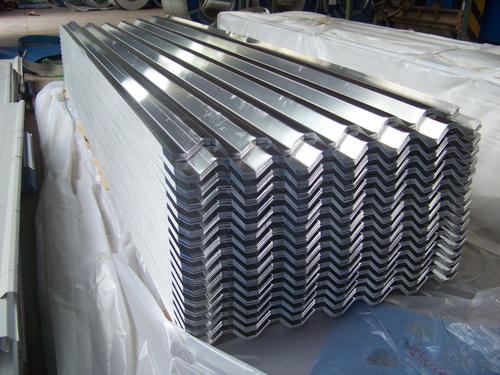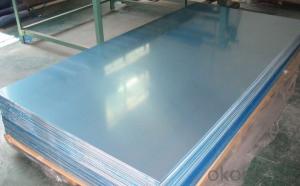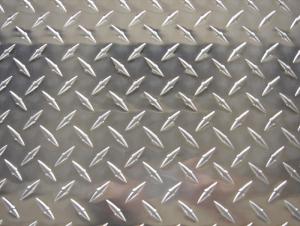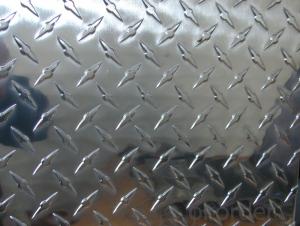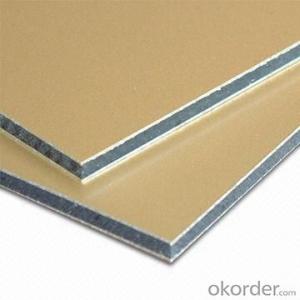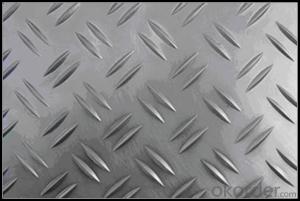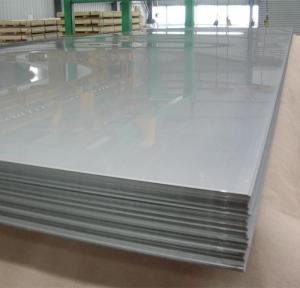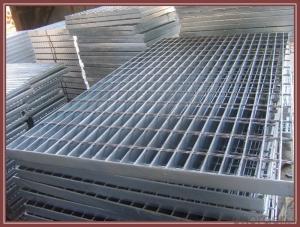4x8 Sheets of Diamond Plate Aluminum - Aluminium Roofing-AA5XXX
- Loading Port:
- China Main Port
- Payment Terms:
- TT OR LC
- Min Order Qty:
- -
- Supply Capability:
- -
OKorder Service Pledge
OKorder Financial Service
You Might Also Like
Aluminium Foil Anti-Corrosion Heat Insulation Roofing Sheet is made of stone powder,
and more than 10 different kinds of inorganic chemical materials with the inside backbone fabric glass cloth.
It features high strength, beautiful, durable in use, fireproofing, frost resisting, corrosion resisting etc,
and the product life could reach more than 20 years; it has overwhelming performance advantages
over the other traditional roofing materials, such as asbestos roofing sheet, glass fiber roofing sheet,
cement roofing sheet and steel roofing sheet. The Product has past the test of PuYang City Quality
Supervision and Inspection Center, each performance index has reached and exceed JC / T747-2002
national standard.
| Big Wave | Medium Wave | Small Wave | |
| Length | 1000 mm -7000 mm | 1800, 2400, 3000 mm | 2400 mm |
| Width | 970 mm | 970 mm | 720 mm |
| Tickness | 4.5-6 mm | 4.5-6 mm | 4-6 mm |
| Wave Height | 55 mm | 40 mm | 25 mm |
| Wave Number | 4.5 | 7.5 | 11.5 |
| Wave Distance | 200 mm | 100 mm | 50 mm |
| Weight/ M | 9-11 kg | 9-11 kg | 7-9 kg |
- Q: What are the different types of surface treatments available for anodized aluminum sheets?
- There are several different types of surface treatments available for anodized aluminum sheets. These treatments can enhance the appearance, durability, and functionality of the aluminum surface. 1. Brushed Finish: This treatment involves brushing the surface of the aluminum sheet with abrasive materials to create a pattern of parallel lines. It gives the sheet a matte appearance and helps to hide scratches and fingerprints. 2. Mirror Finish: In this treatment, the aluminum sheet is polished to a high gloss finish, creating a mirror-like reflection. This finish is commonly used in decorative applications and gives a sleek and modern look to the aluminum surface. 3. Etched Finish: Etching involves using chemicals or abrasive materials to remove a thin layer of the anodized coating from the aluminum surface. This creates a textured or patterned design on the sheet. Etching can be done in various depths and designs, allowing for customization and unique aesthetics. 4. Powder Coating: Powder coating is a popular surface treatment where a dry powder is electrostatically applied to the anodized aluminum sheet and then cured under heat. This creates a durable and resistant coating that can be customized in terms of color, texture, and finish. 5. Satin Finish: Satin finish involves sanding the aluminum sheet with fine grit sandpaper to create a smooth, brushed appearance. It provides a subdued and elegant look to the aluminum surface. 6. Mechanical Finishes: Mechanical finishes include various techniques like polishing, buffing, or grinding to achieve different surface textures and finishes. These finishes can range from smooth and glossy to rugged and textured, depending on the desired effect. 7. Chemical Treatments: Chemical treatments such as anodizing, chromating, or chemical brightening can be used to enhance the corrosion resistance, color, and overall appearance of the aluminum sheet. These treatments can also improve the adhesion of paints or adhesives to the surface. It is important to note that the availability of these surface treatments may vary depending on the manufacturer and specific requirements. It is recommended to consult with the supplier or manufacturer to determine the most suitable surface treatment for your application.
- Q: ... initial temperature of the water or the initial temperature of the aluminum? Why?
- Let's say the aluminum starts out at a higher temperature than the water. The aluminum cools down by 1°C, which means it loses energy (Q = mcΔT, where ΔT = 1°C). That energy goes to the water, warming it up. Since Q is the same for both water and aluminum, and m is the same for both, all that matters is the heat capacity c. Water has a higher heat capacity than aluminum, so for the same Q it must have a smaller ΔT. This process continues until both have reached the same T. From the above paragraph, you should be able to figure out if the final T is closer to the initial water temp or the original aluminum temp.
- Q: Do 101 aluminum sheets have any specific certifications or standards?
- Yes, 101 aluminum sheets typically have certifications and standards that ensure their quality and performance. These may include certifications like ASTM (American Society for Testing and Materials) and standards such as AA (Aluminum Association) standards, which verify the material's composition, mechanical properties, and manufacturing processes. Additionally, specific industry certifications like ISO 9001 (International Organization for Standardization) may be applicable to ensure consistent quality control during production.
- Q: Dear all, i'm having crack problem with bending aluminium sheet metal, anyone know than which type(Model) of aluminium sheet metal is suitable for bending, Thanks.
- Use 3000 series aluminum, it is very bendable. If you use the popular 6061 alloy, it will break or crack nearly all the time.
- Q: Can aluminum sheets be welded or soldered?
- Aluminum sheets have the capability to undergo both welding and soldering processes, although the techniques for each differ significantly. When welding aluminum, a TIG (Tungsten Inert Gas) or MIG (Metal Inert Gas) welding process is typically employed, necessitating a high heat source and a filler material to connect the sheets. This process is generally more demanding when compared to welding steel due to aluminum's high thermal conductivity and lower melting point. On the other hand, soldering aluminum involves utilizing a low-temperature solder and flux to bond the sheets together. Usually, specialized solders like aluminum solder or solder with a high tin percentage are employed. Soldering aluminum is typically less prevalent and more intricate than soldering other metals due to the presence of an oxide layer on aluminum, which hinders proper adhesion. To summarize, while both welding and soldering can be utilized for joining aluminum sheets, welding is the more commonly employed method due to its superior strength and durability. Soldering aluminum presents additional challenges due to the requirement for specialized solders and the presence of the oxide layer.
- Q: Can aluminum sheets be used for bus shelters?
- Indeed, bus shelters can utilize aluminum sheets. Aluminum, a lightweight and enduring substance, finds extensive use in construction ventures, encompassing bus shelters. Its exceptional resistance to corrosion renders it apt for outdoor scenarios, where it confronts inclement weather. Moreover, aluminum sheets are conveniently malleable and can be fashioned into manifold forms and dimensions, permitting tailor-made designs and effortless installation. Employing aluminum sheets for bus shelters also entails a cost-efficient resolution as it demands scant upkeep and boasts a prolonged existence.
- Q: What are the common aluminum sheets and the best ones?
- 30035005, a lot of aluminum imports, Japanese MITSUBISHI, as well as a German what, that is ultra expensive......
- Q: What is the typical corrosion resistance of aluminum sheets?
- The typical corrosion resistance of aluminum sheets is quite high. Aluminum naturally forms a protective oxide layer on its surface, which helps to prevent further corrosion. This oxide layer acts as a barrier, preventing moisture and other corrosive elements from reaching the underlying metal. Additionally, aluminum is also highly resistant to many common types of corrosion, such as rusting and pitting. However, the corrosion resistance of aluminum can vary depending on various factors, such as the alloy composition, surface treatment, and exposure to harsh environments. Overall, aluminum sheets are known for their good corrosion resistance, making them suitable for a wide range of applications in various industries.
- Q: Can aluminum sheets be used for heat sinks in LED lighting?
- Yes, aluminum sheets can be used for heat sinks in LED lighting. Aluminum is widely used in heat sink applications due to its excellent thermal conductivity and lightweight properties. It effectively dissipates heat generated by the LED, helping to maintain optimal operating temperatures and prolong the lifespan of the lighting system.
- Q: What is the corrosion resistance of aluminum sheets?
- Aluminum sheets possess remarkable resistance to corrosion. When exposed to oxygen, aluminum automatically develops a protective oxide layer on its surface, functioning as a barrier against corrosion. This layer is extremely stable and effectively halts any further oxidation of the metal, resulting in aluminum's exceptional resistance to corrosion in nearly all surroundings. Furthermore, aluminum sheets can be improved even further through surface treatments or coatings to augment their corrosion resistance. As a result, aluminum sheets are widely favored for a multitude of applications in which corrosion resistance is of utmost importance, including the construction industry, automotive manufacturing, and marine applications.
Send your message to us
4x8 Sheets of Diamond Plate Aluminum - Aluminium Roofing-AA5XXX
- Loading Port:
- China Main Port
- Payment Terms:
- TT OR LC
- Min Order Qty:
- -
- Supply Capability:
- -
OKorder Service Pledge
OKorder Financial Service
Similar products
Hot products
Hot Searches
Related keywords

